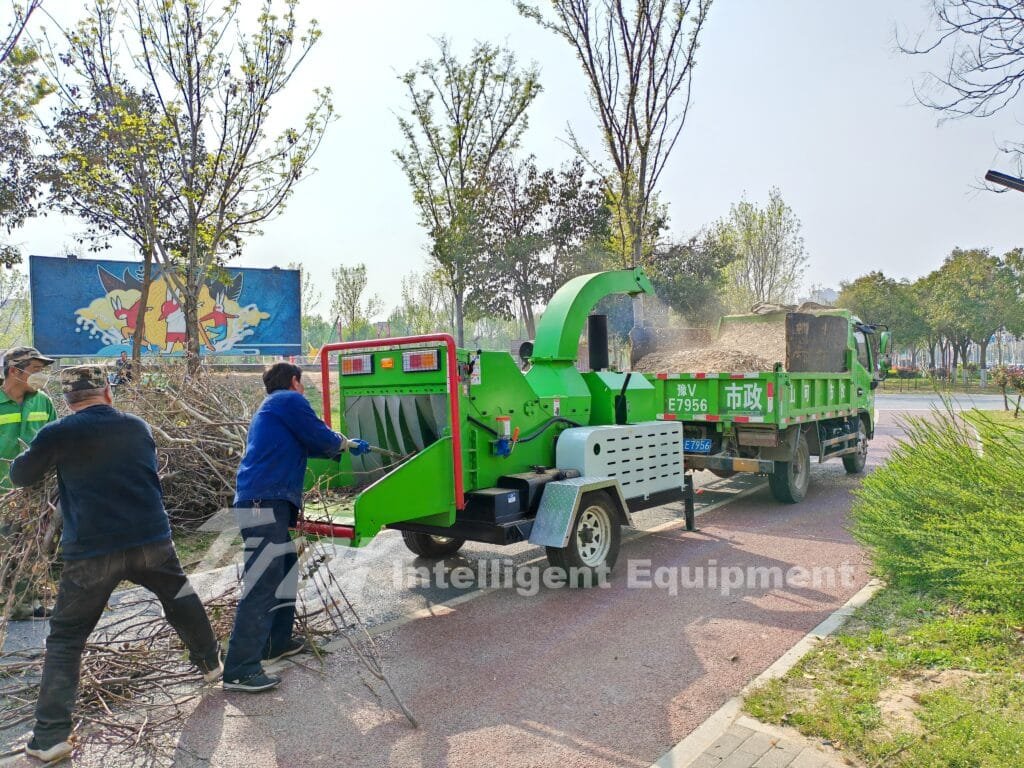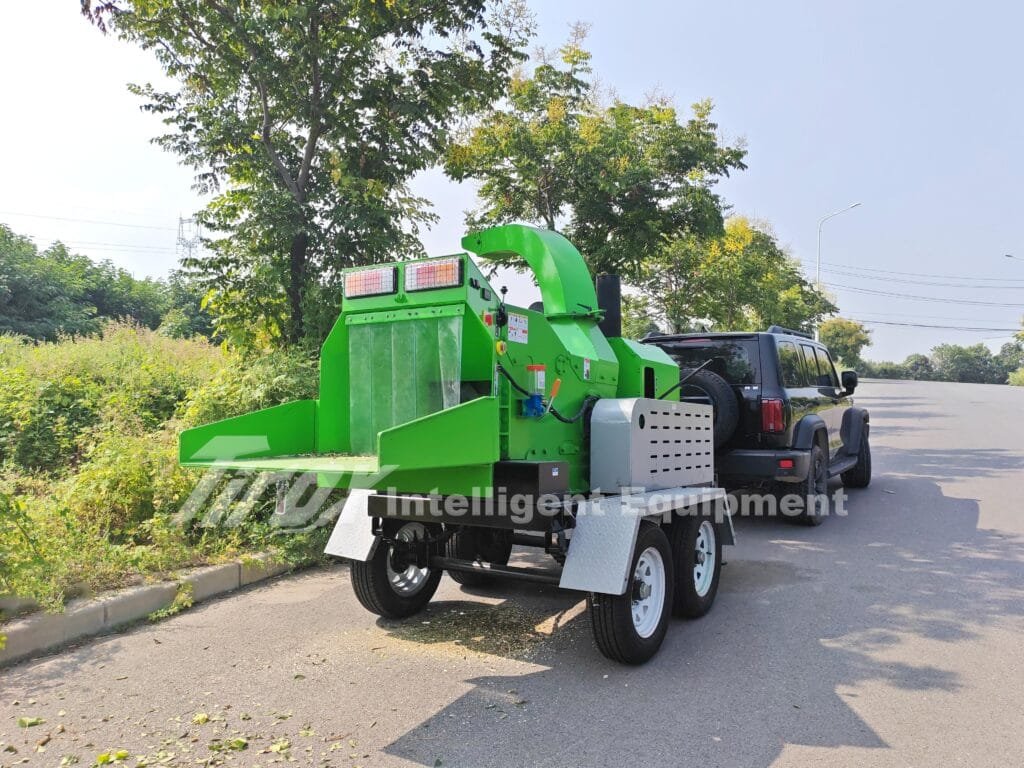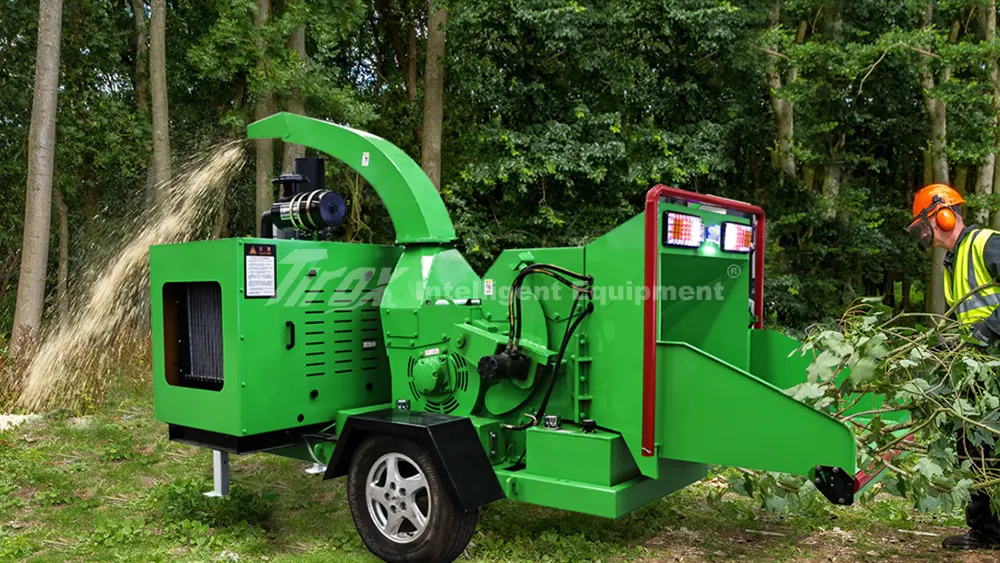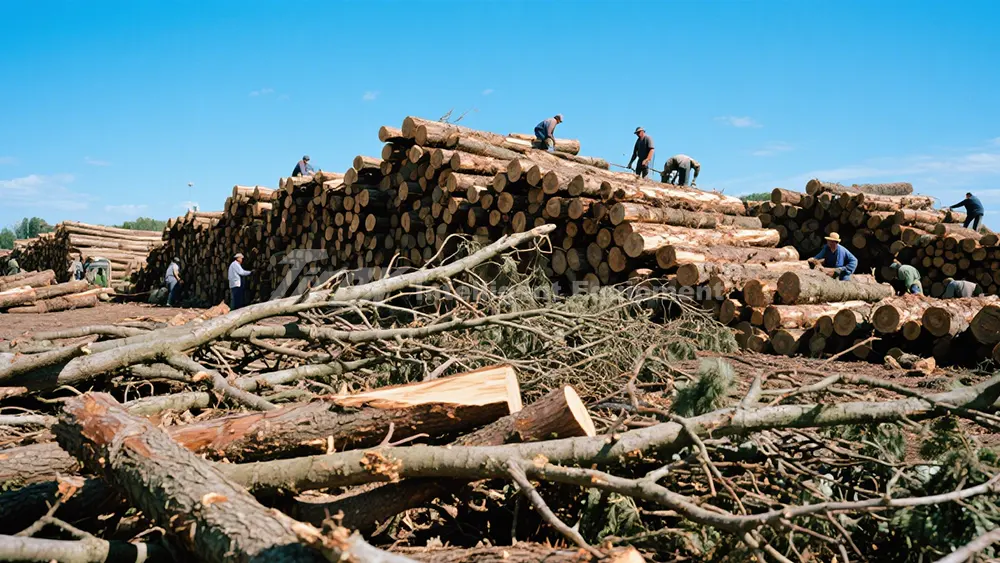Wood chippers are essential equipment in the wood processing industry, and their efficiency directly impacts the overall operation of the production line. The feeding system, as a critical part of the wood chipper, often determines the machine’s operational efficiency and stability. If the feeding system is not functioning smoothly, it can cause overloads, downtime, or even damage to the machine. Therefore, optimizing the feeding system is key to improving the overall production efficiency of the wood chipper.
The Basic Role of the Feeding System
The primary function of the feeding system is to deliver wood evenly and steadily into the chipper. It directly affects the machine’s load and processing speed. If the feeding speed is too fast or too slow, it can cause instability in the machine’s operation. Uneven feeding can also result in clogging or overloading, affecting the shredding process.
Optimize Feeding Speed to Avoid Overloading
Controlling the feeding speed is crucial. If the feeding speed is too fast, the machine may overload and stop or suffer damage. If the feeding speed is too slow, the production efficiency will drop. To address this, you can adjust the feeding equipment to control the speed. For example, using an adjustable conveyor belt or feeder, you can match the feeding speed to the type of wood and the requirements of the chipper, ensuring that the machine runs under optimal load conditions.
We recommend that customers maintain a stable feeding speed based on different types of wood and machine specifications to avoid overloading the machine. This simple measure will help extend the equipment’s lifespan and improve overall production efficiency.

Improve Feeding Uniformity to Reduce Downtime
Uniform feeding is crucial for the proper functioning of the machine. Uneven feeding can cause overload or blockages in certain areas, leading to downtime or production interruptions. To ensure uniform feeding, you can use vibrating screens or sorting systems to separate and evenly distribute the wood into the feed chute.
Additionally, adjusting the design of the feeding system can also improve uniformity. For example, you can widen the feeding chute to prevent excessive wood buildup, ensuring that each batch of wood is evenly distributed. It is important to regularly check the feeding system to ensure no debris or blockages are hindering smooth feeding.
Regularly Inspect and Maintain the Feeding System
Regular inspection and maintenance of the feeding system are essential to ensure its high efficiency. Common components of the feeding system, such as conveyor belts, feed chutes, and screens, can wear out or become clogged over time, affecting the feeding performance.
We recommend customers conduct a thorough inspection at regular intervals, paying particular attention to the wear of the conveyor belt and the condition of the feed chute. Regular cleaning and removal of debris from the feeding system will help minimize equipment failures and extend the system’s service life.
Leverage Automation to Enhance Feeding Efficiency
With the development of automation technology, many wood chippers now feature automated feeding systems. These systems use sensors and automated controls to adjust feeding speed and uniformity based on the type of wood and feeding conditions, further improving production efficiency.
For customers with large-scale production needs, investing in automated feeding systems can significantly reduce manual intervention and operational errors, increasing production efficiency. While the initial investment may be higher, automated systems can greatly reduce labor costs and maintenance fees, making them an ideal choice for improving production efficiency in the long run.

Choose the Right Feeding Equipment
Selecting the right feeding equipment is crucial to optimizing the feeding system. Depending on the production needs, customers can choose from various types of feeding equipment, such as belt conveyors or screw conveyors. Each type of equipment has its advantages and disadvantages, so customers should select the most suitable feeding equipment based on their production scale and wood type.
For example, if the production involves a variety of wood types, a belt conveyor may be a better choice as it handles different shapes and sizes of wood more effectively. If continuous, high-efficiency feeding is required, an automated feeding system may be the best option to ensure uninterrupted production.
Conclusion
Optimizing the feeding system is an essential step in improving the production efficiency of a wood chipper. By adjusting feeding speed, improving feeding uniformity, regularly inspecting and maintaining the equipment, and considering automation upgrades, customers can significantly enhance production efficiency and reduce downtime and equipment failures. Properly selecting and adjusting feeding equipment will help customers maintain high production efficiency while reducing operational costs.






